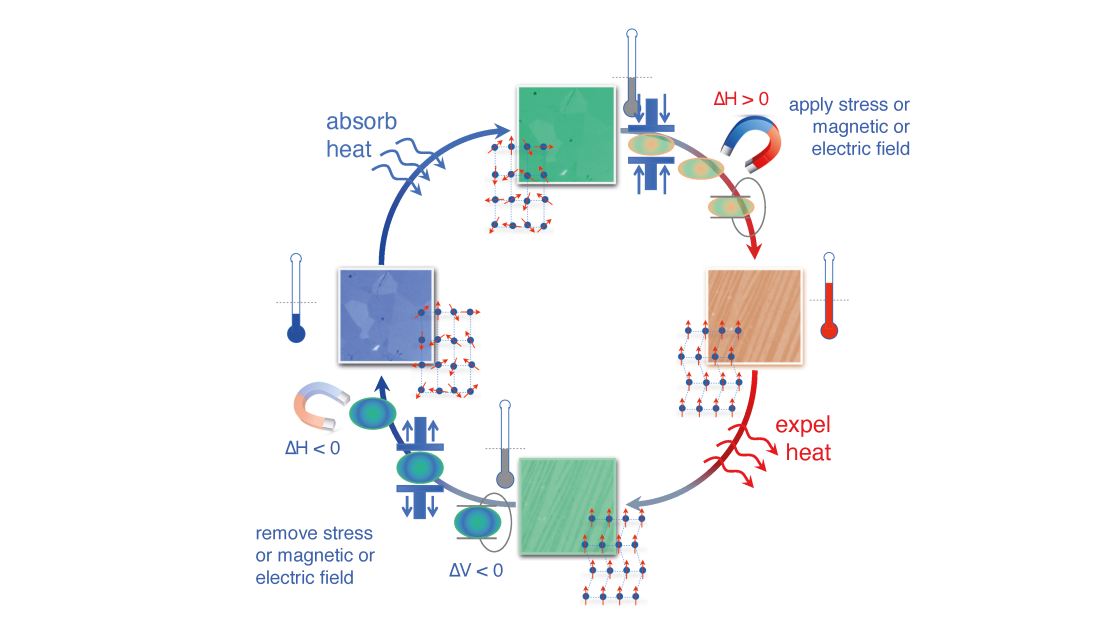Department Spin and Topology in Quantum Materials
Magnetic Energy Materials - JointLab BiBer
Our research aims at understanding the coupling between different degrees of freedom which give rise to phenomena such as the caloric and multicaloric effects, magnetoresistance, shape memory, etc, with the ultimate goal of engineering novel functional magnetic materials.
Caloric effects have an enormous potential for applications in room-temperature cooling due to the higher efficiency and environmentally friendliness. For example, magnetocaloric materials are considered as the most promising candidates for replacing the currently predominant vapor compression-based cooling technology.
However the physics behind the phenomena giving rise to these effects is poorly understood and the development of novel materials still relies on a trial and error approach. Therefore, in order to develop new and more efficient materials, fundamental understanding of the interplay between different degrees of freedom which give rise to phase transitions and the associated caloric effects needs to be gained in a fundamental level. Our objective is to probe materials presenting caloric effects in order to understand what makes these materials tick with the ultimate goal of making it possible to develop improved materials for applications.
Our "toolbox" includes:
- a number of synthesis techniques such as arc melting, ball milling, thin film growth, etc.;
- Various X-rays and neutron scattering techniques which allow us to follow the magnetic and structural evolution of caloric systems;
- pressure, temperature and magnetic field dependent measurements make it possible to trigger and follow phase transitions under the influence of diferent stimuli;
- in-field differential scanning calorimetry;
- high resolution transmission electron microscopy;
We are always open to collaborations and we are always keen on having talented scientists joining our group. Please contact us with any questions you have.

